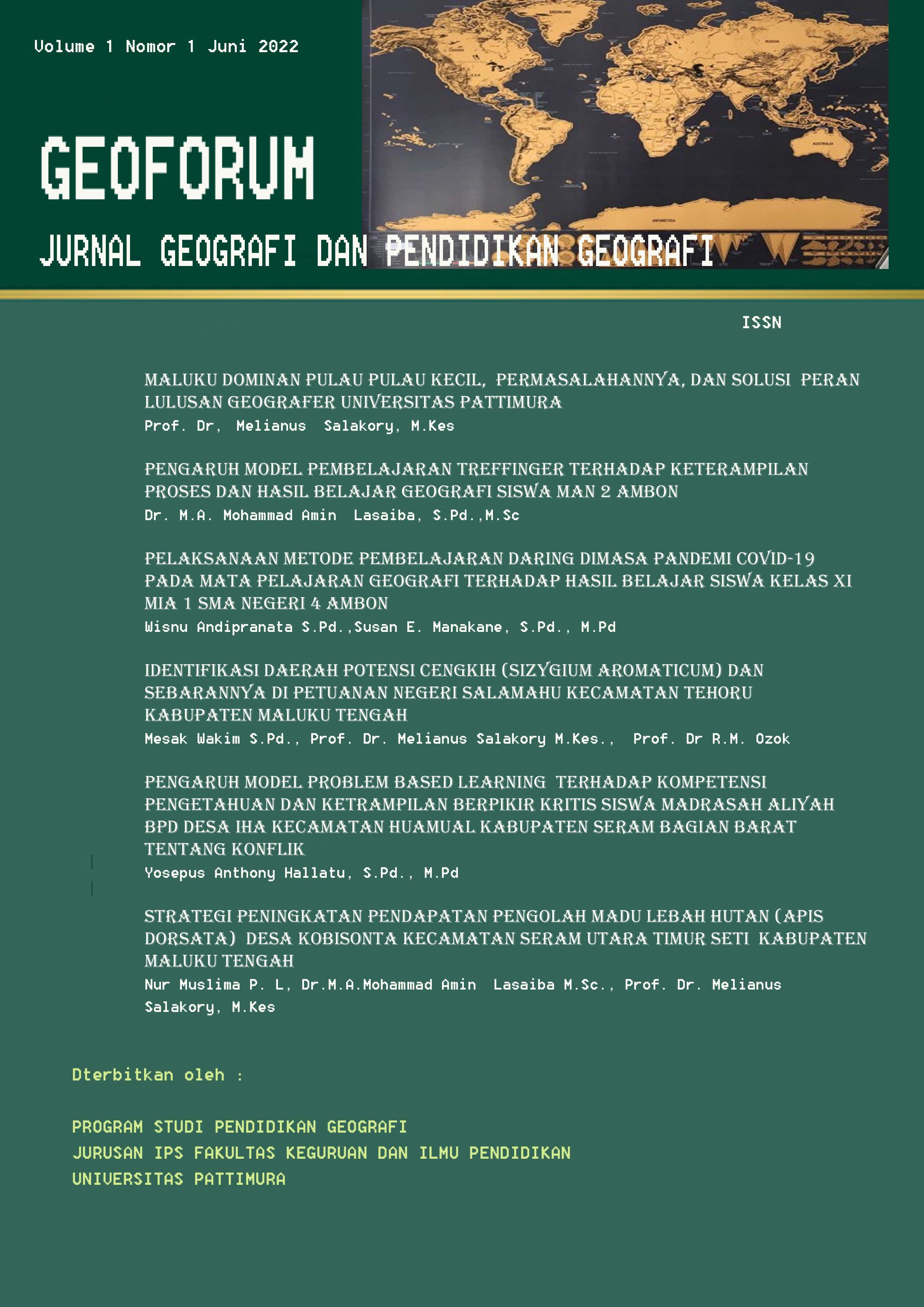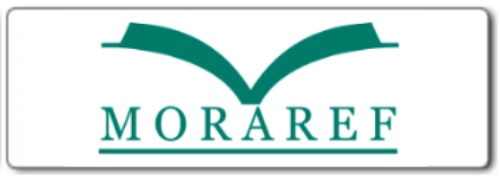Study of Ozone (O3) Technology for Post-Harvest Handling of Horticultural Products
Kajian Teknologi Ozon (O3) Sebagai Penanganan Pascapanen Produk Hortikultura
Abstract
It is important to recognize that horticultural products not only meet our nutritional needs but also support economic and ecological well-being. Beyond their nutritional aspects, horticultural products also have a positive impact on the environment. The planting of ornamental trees, flowers, and urban gardens helps absorb carbon dioxide, filter air pollution, and create habitats for wildlife. The spoilage of horticultural products is a complex and significant issue in the agricultural industry and food supply chain. In the context of global food security, food waste caused by the spoilage of horticultural products is a serious problem. The preservation of horticultural products using ozone technology is an innovative approach that has gained attention for extending shelf life, reducing damage from pathogenic microorganisms, and maintaining the quality and freshness of the products. This paper seeks the latest information on the use of ozone in the preservation of horticultural products and the challenges associated with it. The study employs a literature review method as the primary approach to data collection. Ozone (O3), a form of oxygen with strong oxidative properties, has proven to be highly effective in combating pathogenic microorganisms, eliminating unwanted odors, and extending the shelf life of horticultural products. However, despite its significant benefits, the use of ozone must be carried out with caution to avoid potential negative impacts on humans and the environment.
Downloads
References
Ameriana, M. (2008). Perilaku Petani Sayuran dalam Penggunaan Pestisida Kimia. J. Hort, 18(1), 95–106.
Anchalee, S., Puengphian, C., Jongpanyalert, B., Pisuchpen, S., Rugkong, A., & Chanawirawan, S. (2015). Storage quality of longkong (Lansium domesticum Corr.) fruit as affected by ozonated water and sodium hypochlorite pretreatment. Acta Horticulturae, 1088, 201–206. https://doi.org/10.17660/ActaHortic.2015.1088.30
Ansiska, P., Anggraini, S., Sari, I. M., Windari, E. H., & Oktoyoki, H. (2023). Isolasi Dan Identifikasi Jamur Patogen Buah Stroberi Selama Penyimpanan. Jurnal Ilmu-Ilmu Pertanian Indonesia, 25(1), 34–39. https://doi.org/10.31186/jipi.25.1.34-39
Aqualdo, N., Eryati, & Indrawati, T. (2012). Penyeimbangan Lingkungan Akibat Pencemaran Karbon Yang Ditimbulkan Industri Warung Internet Di Kota Pekanbaru. Jurnal Ekonomi, 20(August), 1–11.
Ardila, L., Rosanti, D., & Kartika, T. (2022). Karakteristik Morfologi Tanaman Buah di Desa Suka Damai Kecamatan Tungkal Jaya Kabupaten Musi Banyuasin. Indobiosains, 4(2), 36. https://doi.org/10.31851/indobiosains.v4i2.6163
FAO. (2022). UN Report: Global hunger numbers rose to as many as 828 million in 2021. State of Food Security and Nutrition Report. https://www.fao.org/newsroom/detail/un-report-global-hunger-SOFI-2022-FAO/en
Farizha, K. M., Legowo, A. M., & Pratama, Y. (2022). Aplikasi Teknologi Ozon Pada Bahan Pangan. Jurnal Teknologi Pangan, 5(1), 27–29. https://doi.org/10.14710/jtp.2021.23616
Guzel-Seydim, Z. B., Greene, A. K., & Seydim, A. C. (2004). Use of ozone in the food industry. Lwt, 37(4), 453–460. https://doi.org/10.1016/j.lwt.2003.10.014
Han, J. H., Soo Oh, B., Choi, S. Y., Kwon, B. C., Hyun Sohn, M., Kim, K. E., & Kang, J. W. (2006). Killing effect of ozone on house dust mites, the major indoor allergen of allergic disease. Ozone: Science and Engineering, 28(3), 191–196. https://doi.org/10.1080/01919510600689679
Istiqomah, N., Mulyani, N. S., Mafruhah, I., & Ismoyowati, D. (2018). Analisis Pengembangan Klaster Hortikultura di Kabupaten Ngawi. Jurnal Litbang Provinsi Jawa Tengah, 16(1), 103–118.
Liu, H., Xu, L., Yu, F., Tan, J., Cao, L., Xing, Y., Xu, Q., Yang, S., Liu, X., Yang, P., Yue, T., Wang, X., & Che, Z. (2021). Effects of different ozone treatments on the storage quality and stability of fresh peeled garlic. RSC Advances, 11(37), 22530–22543. https://doi.org/10.1039/d1ra00433f
Lu, J., & Yao, L. (2023). Observational evidence for detrimental impact of inhaled ozone on human respiratory system. BMC Public Health, 23(1), 1–10. https://doi.org/10.1186/s12889-023-15902-6
Ma’ruf, A., Dewi, S. S., & Wardoyo, F. A. (2018). Waktu Paparan Gas Ozon Terhadap Pertumbuhan Bakteri Escherichia coli. Pendidikan, Sains, Dan Teknologi, 1–5.
Pitaloka, D. (2020). Hortikultura: Potensi, Pengembangan Dan Tantangan. Jurnal Teknologi Terapan: G-Tech, 1(1), 1–4. https://doi.org/10.33379/gtech.v1i1.260
Rozana, R., Perdana, D., & Sigiro, O. N. (2021). Simulasi Transportasi Tomat Dan Perubahan Mutu Tomat Selama Penyimpanan. Journal of Food Technology and Agroindustry, 3(1), 13–20. https://doi.org/10.24929/jfta.v3i1.1209
Sari, I. M., Prawanto, A., Sari, K. N., & Ansiska, P. (2023). Pengaruh Teknik Ozonisasi Dan Durasi Perlakuan Terhadap Kesegaran Produk Hortikultura Cabai (Capsicum annum L.). Agroqua, 21(1), 271–281.
Sari, I. M., Prawanto, A., Sari, K. N., Hartawan, W., & Ansiska, P. (2021). Aplikasi Ozonisasi Dalam Upaya Pengawetan Produk Hortikultura Tomat (Lycopersicum esculentum Mill.). Lansium, 3(1), 1–7.
Sugiarto, T. A. (2007). Mengatasi Limbah tanpa Masalah: Penerapan Teknologi Plasma Untuk Lingkungan. Eco-Plasma Indonesia.
Wanis A., Qomariyah, R., & Lesmayati, S. (2021). Peran Teknologi Pascapanen dalam Menjamin Keamanan Produk Hortikultura. Seminar Nasional Dalam Rangka Dies Natalis Ke-45 UNS Tahun 2021, 5(1), 47–57.
Yaseen, T., Ricelli, A., Turan, B., Albanese, P., & D’Onghia, A. (2015). Ozone for post-harvest treatment of apple fruits. Phytopathologia Mediterranea, 54, 94–103. https://doi.org/10.14601/Phytopathol_Mediterr-14478
Yuantari, M., Widianarko, B., & Henna, S. (2018). Analisis Risiko Pajanan Pestisida Terhadap Kesehatan Petani. Jurnal Kesehatan Mayarakat, 4(1), 43–47.
Yudiastuti, S. O., Rizza Wijaya, & Marcello Syahputra. (2022). Efektivitas Reduksi Total Bakteri Pada Edamame (Glycin Max (L) Merill) Hasil Pengolahan Minimal Dengan Ozon. Juremi: Jurnal Riset Ekonomi, 2(3), 321–330. https://doi.org/10.53625/juremi.v2i3.3311
Zulfatiswada, A., & Puspikawati, S. I. (2022). Uji Kandungan Zat Pengawet Formalin pada Buah Impor di Pasar Tradisional Kabupaten Gresik Analysis of Formaldehyde Preservatives in Imported Fruits from Traditional Markets in Gresik. Media Gizi Kesmas (MGK), 11(02), 508–513.
Copyright (c) 2023 Paisal Ansiska, Indriati Meilina Sari, Hefri Oktoyoki

This work is licensed under a Creative Commons Attribution 4.0 International License.





















